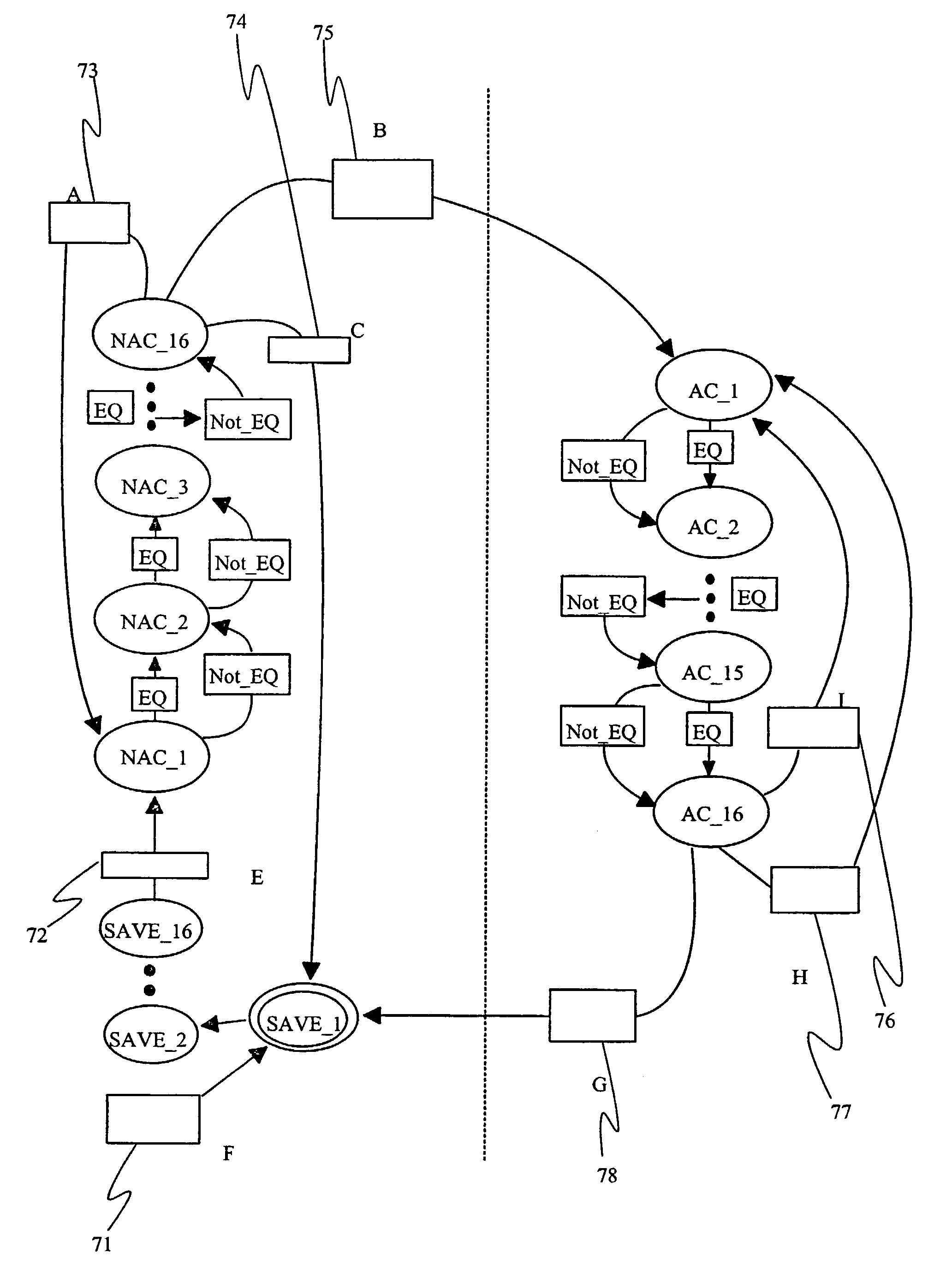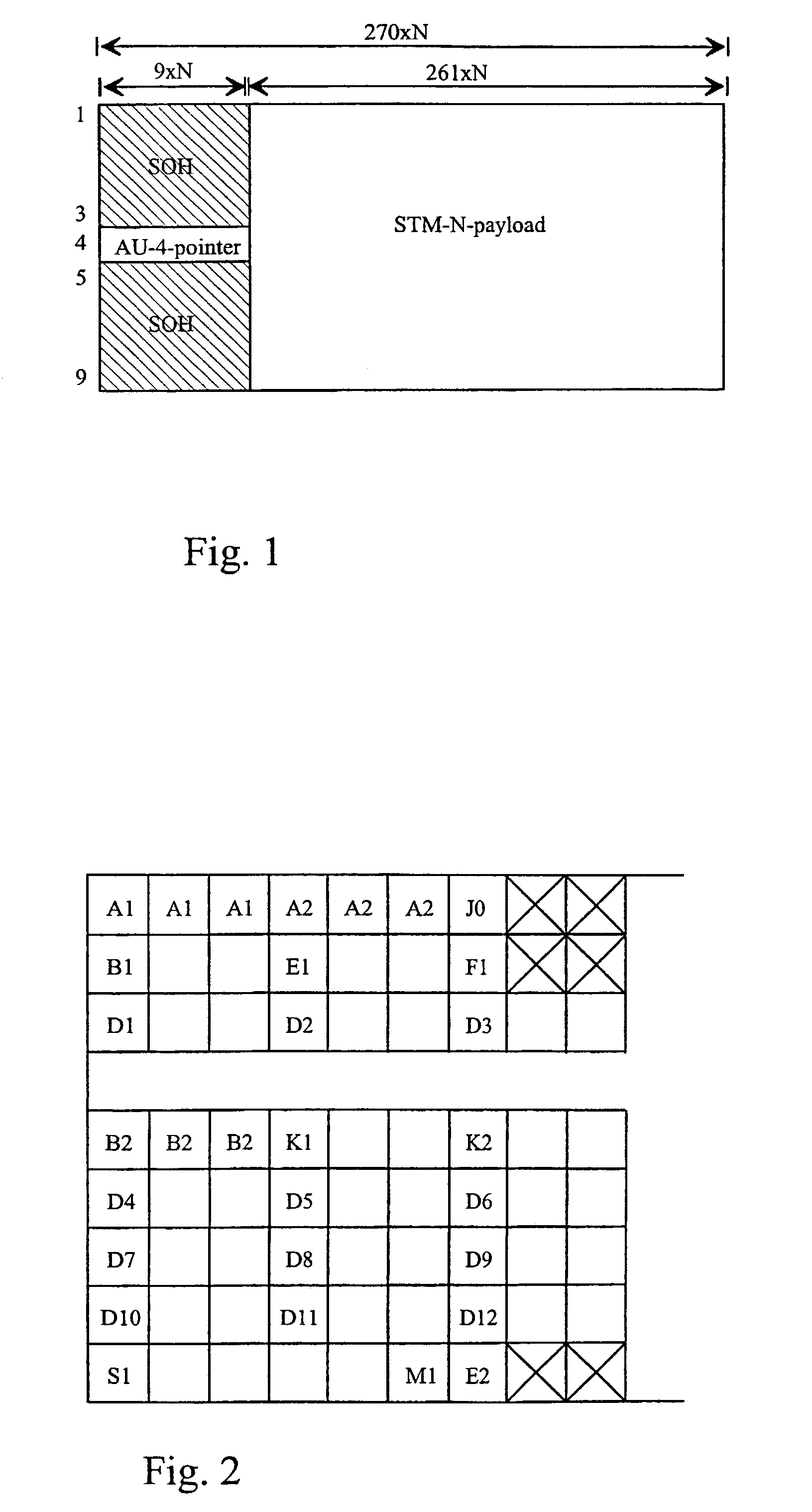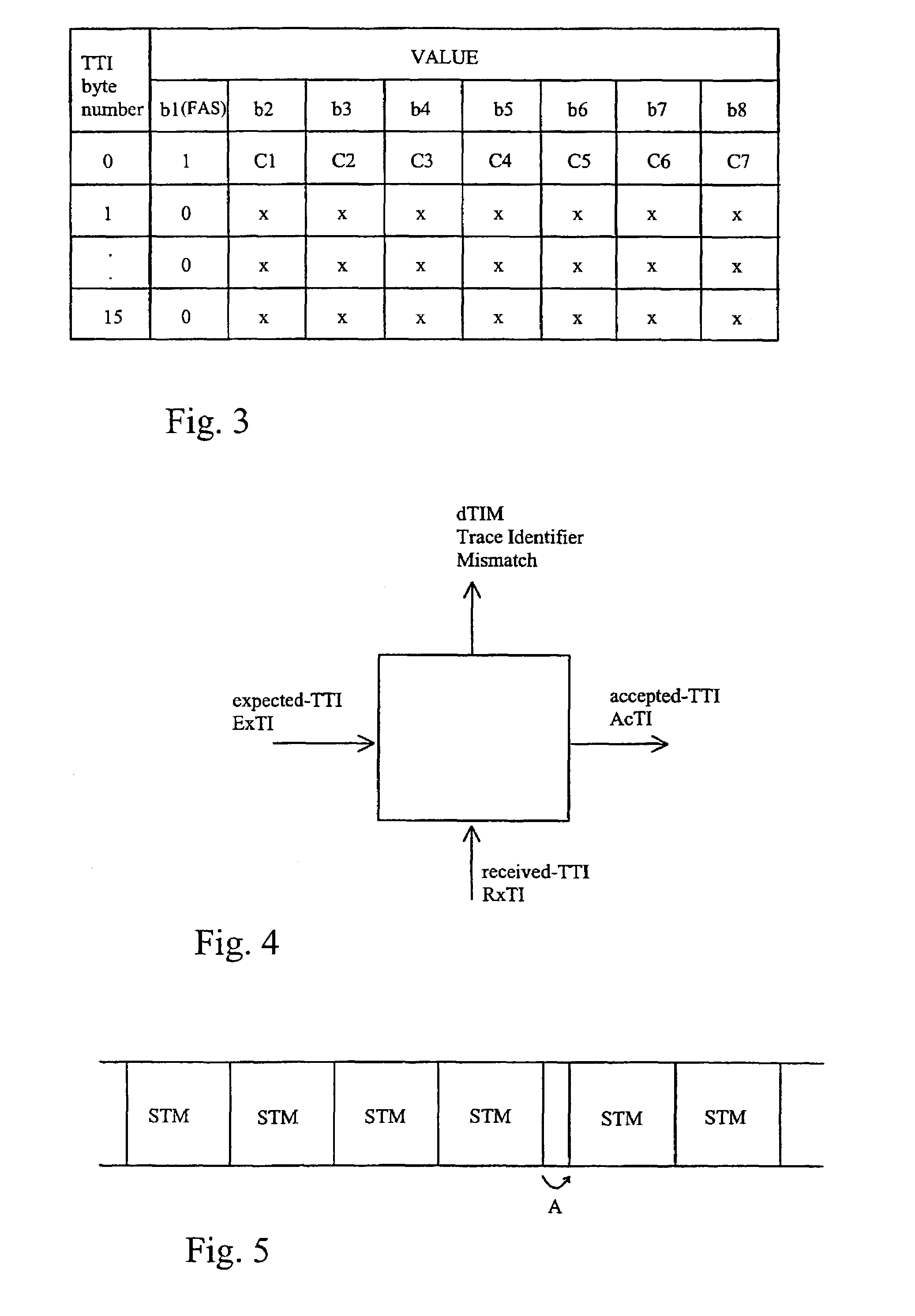Method and arrangement for enhancing the handling of TTI identifier
a technology of identifier and bytes, applied in the field of enhancing the handling of identifiers, can solve the problems of inability to locate, far too expensive to build branching connections, overflow and frame misalignment, etc., and achieve the effect of minimizing signal breaks
- Summary
- Abstract
- Description
- Claims
- Application Information
AI Technical Summary
Benefits of technology
Problems solved by technology
Method used
Image
Examples
Embodiment Construction
[0042]According to the invention the handling of the TTI identifier can be divided into at least two different processes. The first of these processes involves the finding of frame alignment by means of the TTI identifier. In this explanatory embodiment, a frame alignment signal is sought from the most significant bits of the TTI bytes, which frame alignment signal could be a bit pattern ‘1000 0000 0000 0000’, for example. When the frame alignment signal has been found, advantageously a sufficient number of times, the second process for handling the TTI identifier, i.e. the TTI byte acceptance process, becomes executable. In the TTI acceptance process it is checked how well the bytes 0 to 15 in the TTI identifier shown in FIG. 3 match each other in successive frames, whereby, if a sufficient number of TTI bytes 0 to 15 match each other, it is possible to verify that the address information in those STM frames is correct. After the verification, the frames can be transported from the...
PUM
 Login to View More
Login to View More Abstract
Description
Claims
Application Information
 Login to View More
Login to View More - R&D
- Intellectual Property
- Life Sciences
- Materials
- Tech Scout
- Unparalleled Data Quality
- Higher Quality Content
- 60% Fewer Hallucinations
Browse by: Latest US Patents, China's latest patents, Technical Efficacy Thesaurus, Application Domain, Technology Topic, Popular Technical Reports.
© 2025 PatSnap. All rights reserved.Legal|Privacy policy|Modern Slavery Act Transparency Statement|Sitemap|About US| Contact US: help@patsnap.com



